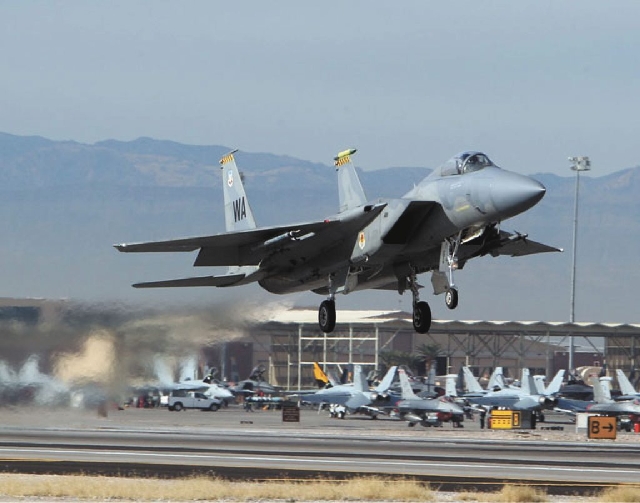Air Force halts some training operations; Nellis impact unknown

WASHINGTON — The Air Force is taking aim at its big costs of fuel and flight this week, temporarily halting training operations for 12 active-duty fighter and bomber squadrons across the United States to save nearly $300 million.
Details emerging Wednesday underscored the sweeping effect of the service’s move to slash 45,000 hours of flight training between now and Oct. 1. The cuts will hit squadrons in eight fighter wings in at least seven states and the Air Warfare Center at Nellis Air Force Base in Nevada.
Bomber squadrons probably will be affected too, but it will be up to the military’s Global Strike Command to determine how to allocate new flight restrictions.
Nellis officials had no comment on how base operations and training exercises will be affected by a reduction in flight hours.
The cuts, forced by congressionally mandated spending reductions for this fiscal year, will not affect current military operations, such as fighters in Afghanistan or bombers training over South Korea. But the Air Force warned that they will have a ripple effect, reducing the service’s ability to be prepared for future operations because pilots must meet minimum flight hour requirements to fly.
The Air Force’s budget chief, Maj. Gen. Edward Bolton, said large chunks of the service’s budget are eaten up by military and some civilian personnel costs, contract obligations, and money to keep bases and facilities open. The Air Force also has to fund much of the major drone flights over Afghanistan, the analysis of the data, the country’s ground and air-based missile defense system and its nuclear arsenal
So, Bolton said, cuts have to be found in flying hours, civilian furloughs and weapons system repairs.
Defense officials said that while cutting flying hours was a difficult decision, it had to be done for the Air Force to maintain its critical support for combatant commanders around the world, including those in Afghanistan and hot spots in the Middle East and Asia. Fighters and bombers have been participating in the joint U.S.-South Korea military exercises.
Lt. Gen. Mark Ramsay, director of force structure and resources for the Joint Chiefs of Staff, said the Air Force had to make the conscious decision to stand down the 12 combat squadrons in order to find savings without affecting ongoing combat operations.
According to the Air Force, air crews, on average, “lose currency” to fly combat commissions within 90 days to 120 days of not flying.
Air Combat Command announced Tuesday that it would ground one-third of the active-duty fighters and bombers, including F-16 Falcons, the stealthy F-22 Raptors, and some of the bombers and airborne warning and control aircraft. Most of the impact would be in the United States, including fighter wings at air bases in Arizona, Florida, Idaho, North Carolina, South Carolina and Virginia, and bombers in South Dakota.
Review-Journal writer Keith Rogers contributed to this report.